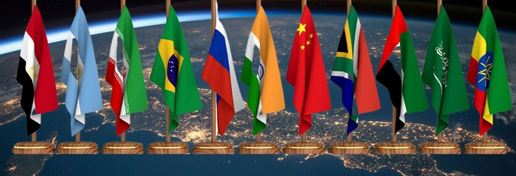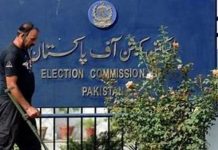The BRICS coalition — consisting originally of Brazil, Russia, India, China, and South Africa — has evolved from a loose grouping of emerging economies into a significant geopolitical and economic force in the 21st century. With its recent enlargement to include Egypt, Ethiopia, Iran, Saudi Arabia, the United Arab Emirates, and Indonesia, the bloc now encompasses close to half of the world’s population and a substantial share of global GDP and energy production. This expansion heralds major shifts in global governance, trade, and international relations, but also comes with a complex matrix of challenges.
BRICS has positioned itself as a champion for a more multipolar world, contesting Western-dominated global institutions. Modern multilateral bodies such as the United Nations, International Monetary Fund (IMF), and World Bank have seen calls for reform to better represent developing countries and address systemic inequalities. BRICS, through mechanisms like the New Development Bank (NDB) and the Contingent Reserve Arrangement (CRA), champions inclusive governance and financial cooperation, promoting alternatives to Bretton Woods institutions that often marginalize the Global South.
The group’s inclusive approach based on consensus sees the potential to reform international institutions toward fairness and democracy, but the expanded membership introduces complexities in balancing diverse national interests while preserving unity.
With growing intra-BRICS trade, the coalition leverages complementary economic strengths: China’s manufacturing, India’s IT and service sector, Russia’s energy resources, Brazil’s agricultural base, and South Africa’s mineral wealth. The expanded BRICS+ includes oil powerhouses Saudi Arabia and UAE, enhancing the group’s influence over global energy markets.
The BRICS countries have also made strides in advocating bilateral and multilateral trade agreements, expanding investments within the bloc, and increasingly exploring trade in national currencies to reduce reliance on the US dollar — a move towards “de-dollarization” that resonates with many members’ strategic interests.
BRICS has taken collective action on issues such as climate change, public health, and sustainable development. The group actively pursues cooperation on technology transfer, capacity building, and innovation to meet Sustainable Development Goals (SDGs). Its role in vaccine production and pandemic response during COVID-19 underscored BRICS’ potential as a critical global problem-solver.
The New Development Bank’s infrastructure and green financing initiatives further reflect BRICS’ commitment to sustainable and equitable growth, especially in emerging economies.
BRICS members have distinct political systems, economic development levels, and strategic priorities. China and Russia often emphasize challenging Western hegemony and expanding BRICS’ geopolitical clout, sometimes advocating anti-Western stances. India and Brazil tend to favor a more moderate, balanced approach that maintains cooperation with Western nations while pursuing reform.
This ideological diversity complicates consensus decision-making, especially given BRICS’ equal voting system in institutions like the NDB, where economic weight varies dramatically among members. The expansion with countries of differing governance models raises questions about the bloc’s cohesion and the practicality of consensus-based leadership as membership grows.
BRICS’ growing influence has not gone unnoticed by Western powers, with some viewing the coalition as a rival bloc intent on reshaping or supplanting the current global order. Increased US-China tensions and the ongoing Russia-West conflicts inject volatility into the bloc’s dynamics. Pressure from the West on some member countries through sanctions or diplomatic coercion creates external stress, challenging BRICS’ unity and external engagement.
Economic uncertainties, such as trade protectionism, technological disruption, and global financial instabilities, also present challenges. Varying national economic health means that some BRICS members face structural reforms and growth limitations, which could dampen collective momentum.
The enlarged BRICS faces the challenge of institutionalizing its cooperative framework — including establishing a permanent secretariat and clear membership criteria. Managing expansion while maintaining effective governance and decision-making mechanisms is critical to ensuring the coalition’s functional integrity.
Additionally, the need for weighted voting or reform in decision-making may grow more acute as membership rises, particularly to balance China’s predominant economic power with that of smaller members.
By the mid-2020s, BRICS is expected to solidify its standing as a key actor in global affairs with enhanced economic integration, diplomatic influence, and strategic partnerships. The group’s expanded membership provides opportunity for diversified alliances, greater energy market control, and stronger voices in multilateral forums like the G20 and United Nations.
Balance internal diversity while forging common goals on reform, sustainable development, and economic collaboration.
Foster innovation in financial mechanisms such as the New Development Bank and BRICS Pay system to support trade and development in member currencies.
Navigate geopolitical tensions effectively to maintain constructive engagement without alienating significant global partners.
Institutionalize frameworks that allow efficient decision-making amidst expansion, possibly adapting consensus models or adopting weighted systems.
India’s upcoming chairmanship in 2026 and Brazil’s current leadership reflect ongoing efforts to steer BRICS toward pragmatic and inclusive agendas, focusing on climate action, food security, and health cooperation.
The future of BRICS embodies both promise and complexity. As a unique coalition representing emerging and developing economies, BRICS has the potential to accelerate the transition toward a more balanced and multipolar world order. Its growing economic heft, demographic weight, and institutional innovations position it as a significant global player.
However, realizing this potential requires surmounting internal frictions, external geopolitical challenges, and governance maturation. With concerted diplomacy and strategic vision, BRICS can become a catalyst for global reform, equitable growth, and sustainable development, profoundly shaping the 21st-century international system.

















